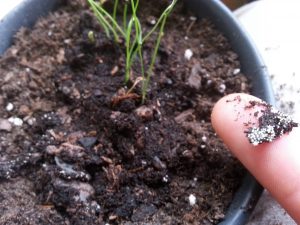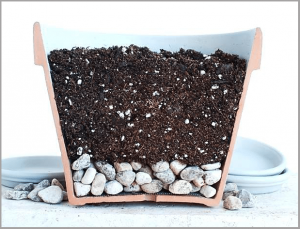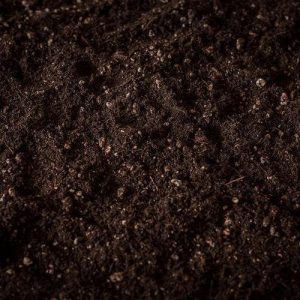A white mold growing over the surface of houseplant potting soil is usually a harmless saprophytic fungus. Although the fungus doesn’t damage the plant, it is unsightly and indicates that there is a problem. Overwatering the plant, poor drainage, and old or contaminated potting soil encourage saprophytic fungus, which feeds on the decaying organic matter in soggy soil.
Cleaning Up the Mold


In most cases, you can simply scrape the mold from the surface of the soil and place the pot in a well-ventilated area so that the soil can dry. If the mold returns or the soil remains soggy, you should repot the plant using fresh, sterile potting soil. Before you use the pot again, soak it in a solution of 1 part household bleach and 9 parts water for 10 minutes and then scrub it with dish detergent and water.
Proper Watering


Soggy soil encourages problems such as saprophytic fungi and may lead to more serious problems, including root rot. A proper watering technique provides the plant with all of the water it needs without leaving the soil overly wet. Water houseplants only when they need it. A good general rule is to water plants in 6-inch pots when the soil is dry at a depth of 2 inches. Plants in smaller pots should be watered when the soil is dry at a depth of 1 inch. Add water slowly until it runs out of the holes in the bottom of the pot. Excess water that drains from the pot should be discarded promptly.
Proper Drainage


Even the best watering technique won’t prevent soggy soil if the pot doesn’t drain freely. Every plant container should have holes in the bottom for drainage, and the container should sit on a removable saucer that will catch the water as it drains from the pot. Placing a layer of small pebbles at the bottom of the pot improves the drainage and prevents bits of soil from clogging the holes. Always check the holes are not clogged with pebbles.
Potting Soil


Choose a good quality potting soil that contains a mixture of peat moss, composted plant material such as bark, and either sand or perlite. Potting soil may contain other materials as well, but these three ingredients are the basis of a potting soil that can support the plant and drain freely. Potting soil should be clean and free of insects and pathogens such as fungi. Even the best potting soil is only good for a year or two. Once it begins to break down it can no longer manage water well, and the soil will retain too much moisture. Re-pot your plants every two or three years to refresh the soil and improve the drainage.

Pingback: KRV
Good One
Thank you